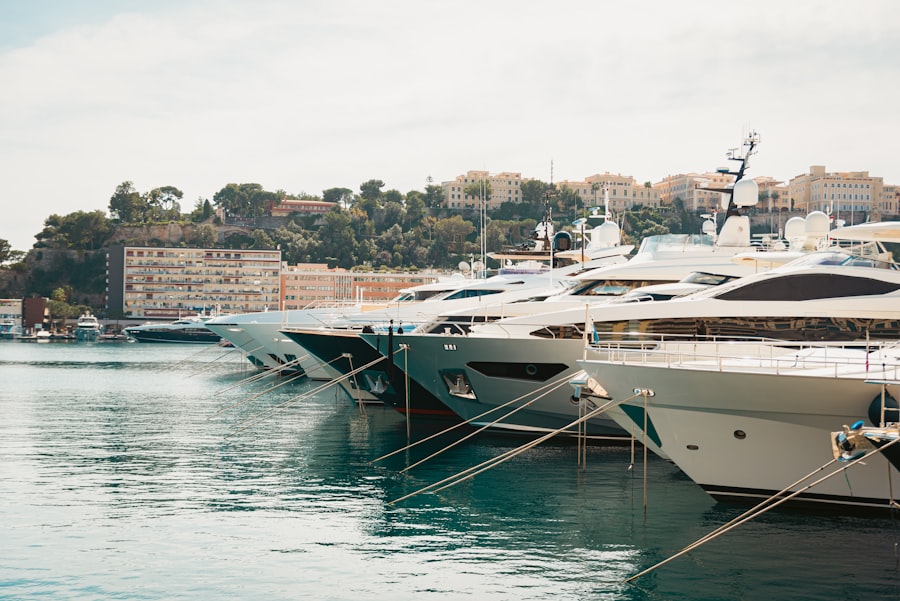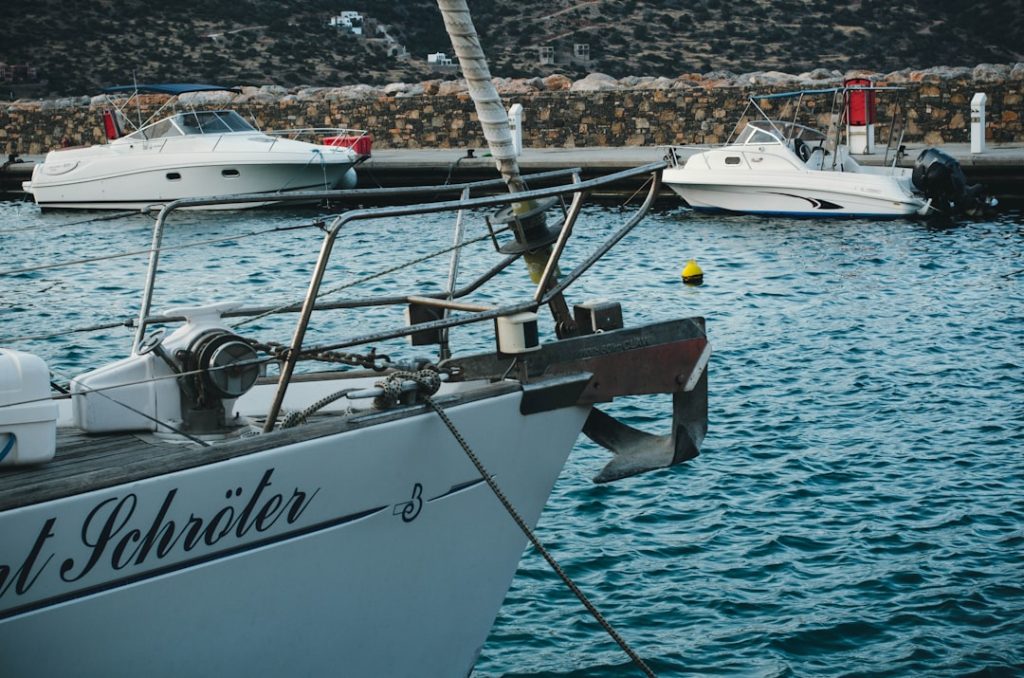The world of yachting is as diverse as it is luxurious, with prices that can vary dramatically based on a multitude of factors. At the lower end of the spectrum, one can find small, used yachts starting at around $10,000 to $50,000. These vessels often cater to entry-level buyers or those looking for a simple way to enjoy weekends on the water.
However, as one ascends the price ladder, the offerings become increasingly sophisticated. Mid-range yachts typically fall between $100,000 and $500,000, featuring enhanced amenities, better construction materials, and more powerful engines. These yachts often serve as a bridge for buyers who desire a balance between affordability and luxury.
At the pinnacle of the market, high-end yachts can command prices that soar into the millions. Custom-built superyachts can easily exceed $10 million, with some of the most extravagant models reaching upwards of $100 million. These vessels are often equipped with state-of-the-art technology, luxurious interiors designed by renowned architects, and a plethora of amenities such as swimming pools, helipads, and even onboard cinemas.
The sheer scale and opulence of these yachts reflect not only their price tags but also the lifestyle they represent. Understanding this range is crucial for potential buyers as it sets the stage for what to expect in terms of features, maintenance, and overall ownership experience.
Key Takeaways
- Yacht prices vary widely, from affordable models to extravagant luxury vessels.
- Budget-conscious buyers can find functional yachts without breaking the bank.
- Mid-range yachts offer a balance between comfort, features, and cost.
- High-end yachts come with premium amenities and significantly higher price tags.
- Additional costs and negotiation strategies are crucial to consider when purchasing a yacht.
Affordable Yacht Options for Budget-Conscious Buyers
For those who are keen on entering the yachting world without breaking the bank, there are several affordable options available. Smaller sailboats and motorboats can be found in the $10,000 to $50,000 range, making them accessible to a wider audience. These vessels are often perfect for day sailing or short trips along coastal waters.
For instance, brands like Catalina and Beneteau offer well-regarded models that provide a good balance of performance and comfort at a reasonable price point. Buyers in this category should focus on used boats, as they often come with a significant reduction in price compared to new models. In addition to traditional sailboats and motorboats, there are also innovative alternatives such as inflatable yachts or catamarans that can be purchased for under $100,000.
These options are particularly appealing for those who prioritize portability and ease of storage. For example, brands like Sea-Doo offer compact jet boats that provide an exhilarating experience on the water without the hefty price tag associated with larger vessels. Furthermore, many budget-conscious buyers opt for fractional ownership or yacht-sharing programs, which allow multiple individuals to share the costs and responsibilities associated with yacht ownership while still enjoying the benefits of having access to a boat.
Mid-Range Yachts: Balancing Price and Luxury

Mid-range yachts represent a sweet spot for many buyers who seek a blend of luxury and practicality. Typically priced between $100,000 and $500,000, these vessels often come equipped with more advanced features than their budget counterparts. For instance, brands like Sea Ray and Jeanneau offer models that include spacious cabins, modern kitchens (galleys), and upgraded navigation systems.
These yachts are designed not only for leisure but also for extended cruising, making them suitable for families or groups looking to spend more time on the water. One notable example in this category is the Beneteau Oceanis series, which combines elegant design with functional layouts. These yachts often feature multiple cabins and bathrooms, allowing for comfortable overnight stays.
Additionally, mid-range yachts frequently incorporate eco-friendly technologies such as solar panels and energy-efficient engines, appealing to environmentally conscious buyers. The investment in a mid-range yacht often pays off in terms of resale value as well; well-maintained models from reputable brands tend to hold their value better than lower-end options.
High-End Yachts: Exploring Extravagant Options
| Yacht Model | Length (ft) | Top Speed (knots) | Guest Capacity | Number of Crew | Key Features |
|---|---|---|---|---|---|
| Sunseeker 131 Sport Yacht | 131 | 38 | 12 | 6 | Luxury interiors, beach club, multiple lounges |
| Feadship 110 | 110 | 20 | 10 | 8 | Custom design, spa, helipad |
| Lürssen 150m | 492 | 22 | 36 | 60 | Swimming pool, cinema, submarine garage |
| Azimut Grande 35 Metri | 115 | 28 | 10 | 5 | Modern design, beach club, gym |
| Benetti Oasis 40M | 131 | 17 | 12 | 7 | Jacuzzi, large sun deck, luxury suites |
High-end yachts epitomize luxury and sophistication in the maritime world. With prices starting at around $1 million and extending into the tens of millions, these vessels are often custom-built to meet the specific desires of their owners. The level of craftsmanship involved in constructing these yachts is unparalleled; they feature high-quality materials such as teak wood, marble finishes, and advanced technology systems that enhance both comfort and performance.
For instance, brands like Feadship and Lürssen are renowned for their bespoke superyachts that offer unparalleled luxury experiences. One striking example is the “Azzam,” which is one of the largest private yachts in the world at 590 feet long and reportedly costs over $600 million. This yacht boasts features such as a swimming pool, multiple decks for entertaining guests, and even a missile defense system.
Such extravagant options are not merely about size; they also reflect a lifestyle that values exclusivity and opulence. High-end yacht owners often enjoy personalized services such as private chefs and crew members trained to cater to their every need while at sea.
Factors Affecting Yacht Prices
Several factors contribute to the pricing structure within the yacht market. One primary consideration is the size of the yacht; larger vessels typically command higher prices due to increased material costs and more complex engineering requirements. Additionally, the type of yacht—whether it’s a sailing yacht or a motor yacht—also plays a significant role in determining its price point.
Motor yachts generally cost more due to their powerful engines and advanced propulsion systems. Another critical factor is the age and condition of the yacht. Newer models tend to be more expensive due to modern technology and design innovations that enhance performance and safety.
Conversely, older yachts may require significant maintenance or upgrades, which can affect their resale value. The brand reputation also influences pricing; established manufacturers with a history of quality craftsmanship often charge a premium for their vessels. Lastly, market demand can fluctuate based on economic conditions; during times of economic prosperity, luxury yacht sales may surge, driving prices higher.
Hidden Costs to Consider when Purchasing a Yacht

While the initial purchase price of a yacht is often what captures buyers’ attention, it is essential to consider the hidden costs associated with ownership. One significant expense is maintenance; regular upkeep is crucial for preserving both the aesthetic appeal and functionality of the vessel. This includes routine cleaning, engine servicing, and repairs that can add up over time.
Depending on the size and type of yacht, annual maintenance costs can range from 10% to 20% of its purchase price. Insurance is another critical expense that should not be overlooked. Yacht insurance premiums can vary widely based on factors such as the yacht’s value, age, and intended use (e.g., chartering versus personal use).
Additionally, docking fees at marinas can be substantial; these fees depend on location and seasonality but can range from hundreds to thousands of dollars per month. Fuel costs also contribute significantly to ongoing expenses; larger motor yachts consume more fuel than smaller vessels or sailing yachts. Understanding these hidden costs is vital for prospective buyers to ensure they are financially prepared for yacht ownership.
Tips for Negotiating Yacht Prices
Negotiating the price of a yacht can be a daunting task for many buyers; however, with proper preparation and strategy, it can lead to significant savings. One effective approach is to conduct thorough research on comparable models in the market. By understanding what similar yachts are selling for—considering factors like age, condition, and features—buyers can establish a reasonable price range for negotiation.
Another useful tactic is to build rapport with the seller or broker. Establishing a positive relationship can create an atmosphere conducive to negotiation; sellers may be more willing to lower their asking price if they feel comfortable with the buyer. Additionally, being flexible with terms can also facilitate negotiations; for instance, offering a quick closing date or being open to accepting certain conditions may encourage sellers to consider lower offers.
Investing in a Yacht: Is it Worth the Price?
The decision to invest in a yacht is multifaceted and often hinges on personal preferences and financial considerations. For many buyers, owning a yacht represents more than just a financial investment; it embodies a lifestyle choice that offers unique experiences on the water. The ability to explore new destinations at one’s leisure or host gatherings with family and friends can provide immeasurable joy that transcends monetary value.
However, potential buyers should also weigh the financial implications carefully. While some view yachts as depreciating assets similar to cars—losing value over time—others argue that well-maintained yachts from reputable brands can retain their value better than expected. Moreover, chartering out a yacht when not in use can offset some ownership costs and even generate income.
Ultimately, whether investing in a yacht is worth it depends on individual circumstances—balancing personal enjoyment against financial realities is key in making an informed decision about this luxurious investment.


